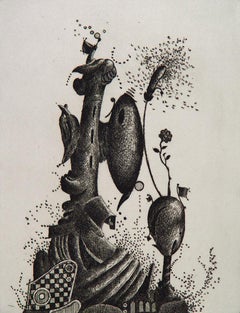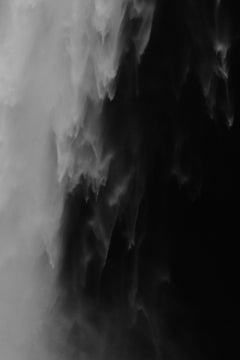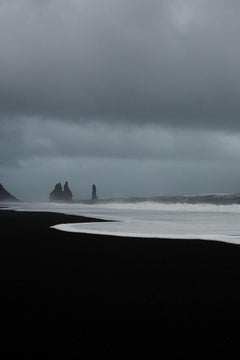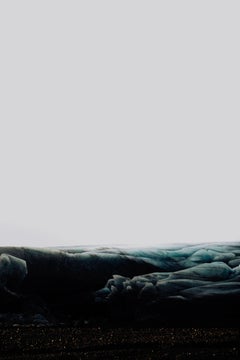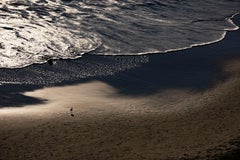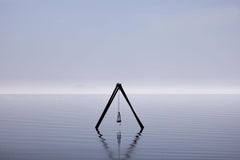Paper Landscape Prints
to
346
934
490
413
366
336
Overall Width
to
Overall Height
to
1,002
274
133
121
56
43
35
35
29
18
10
5
3
3
131
63
53
50
40
100
196
728
1,515
26
12
45
36
9
20
38
74
122
53
74
1,360
868
303
721
703
600
282
247
246
235
227
214
188
178
171
167
158
136
128
125
124
114
113
6,775
3,430
2,539
1,345
1,287
321
606
1,439
1,034
Medium: Paper
Whistle
By Valton Tyler
Located in Dallas, TX
In The New York Times Arts in America column, Edward M. Gomez writes of Valton Tyler, "visionary seems the right word for describing his vivid, unusual and technically refined painti...
Category
1970s Surrealist Paper Landscape Prints
Materials
Rag Paper, Etching
Price Upon Request
Waterfall Photography, Texture Photography, Landscape Prints-Torrent 815
Located in Delaware , OH
Waterfall Photography, Texture Photography, Landscape Prints-Torrent 815
ABOUT THIS PIECE:
"Torrent 815" was part of a Black and White Photogra...
Category
2010s Contemporary Paper Landscape Prints
Materials
Rag Paper, Black and White
Beach Photography, Ocean Photography, Black Sand Photography-Monolith 816
Located in Delaware , OH
Beach Photography, Ocean Photography, Black Sand Photography-Monolith 816
ABOUT THIS PIECE:
Black Sand Beach Landscape Photography, "Monolith 816",...
Category
2010s Contemporary Paper Landscape Prints
Materials
Rag Paper, Color
Blue Photography, Blue Landscape Photography, Fine Art Photography-Glacial 819
Located in Delaware , OH
Blue Photography, Blue Landscape Photography, Fine Art Photography-Glacial 819
ABOUT THIS PIECE:
"Glacial 819", Contemporary Landscape Photography, ...
Category
21st Century and Contemporary Contemporary Paper Landscape Prints
Materials
Rag Paper, Color
Landscape Photography, Beach Pictures, Ocean Photography-Lowtide Swash 021
Located in Delaware , OH
Landscape Photography, Beach Pictures, Ocean Photography-Lowtide Swash 021
ABOUT THIS PIECE:
"Lowtide Swash 021" was part of a series of landscape pho...
Category
2010s Contemporary Paper Landscape Prints
Materials
Rag Paper, Color
The Salton Sea, Blue Sea Photography, Landscape Prints-Lost Sea Swing 021
Located in Delaware , OH
The Salton Sea, Blue Sea Photography, Landscape Prints-Lost Sea Swing 021
ABOUT THIS PIECE:
"Lost Sea Swing 021" was part of a landscape photography series at the Salton Sea in Cal...
Category
2010s Contemporary Paper Landscape Prints
Materials
Rag Paper, Color
Beach Landscape Photography, Ocean Print, Color Photography-Lowtide Swash 022
Located in Delaware , OH
Beach Landscape Photography, Ocean Print, Color Photography-Lowtide Swash 022
ABOUT THIS PIECE:
"Lowtide Swash 022" was part of a series of landscape ph...
Category
2010s Contemporary Paper Landscape Prints
Materials
Rag Paper, Color, Photographic Film, Archival Ink, Archival Paper, Archi...
The Salton Sea, Blue Sea Photography, Landscape Print-Lost Sea Swing 022
Located in Delaware , OH
The Salton Sea, Blue Sea Photography, Landscape Print-Lost Sea Swing 022
ABOUT THIS PIECE:
"Lost Sea Swing 022" was part of a landscape photography series at the Salton Sea in Cali...
Category
21st Century and Contemporary Contemporary Paper Landscape Prints
Materials
Rag Paper, Color
Dogwood
By Andrew Wyeth
Located in Missouri, MO
Andrew Wyeth
"Dogwood" 1983
Collotype
Ed. 115/300
Signed and Numbered Lower Right
Image Size: 21 x 28 3/4 inches
Framed Size: approx. 29 x 36.5 inches
A painter of landscape and figure subjects in Pennsylvania and Maine, Andrew Wyeth became one of the best-known American painters of the 20th century. His style is both realistic and abstract, and he works primarily in tempera and watercolor, often using the drybrush technique.
He is the son of Newell Convers and Carolyn Bockius Wyeth of Chadds Ford, Pennsylvania, and was home-schooled because of delicate health. His art instruction came from his famous-illustrator father, who preached the tying of painting to life--to mood and to essences and to capturing the subtleties of changing light and shadows.
The Wyeth household was a lively place with much intellectual and social stimulation. Because of the prominence of N.C. Wyeth, persons including many dignitaries came from all over the country to visit the family. Andrew's sisters Carolyn and Henriette became noted artists as did his brother-in-law, Peter Hurd. The non-art oriented brother, Nathaniel Wyeth...
Category
1980s American Modern Paper Landscape Prints
Materials
Paper, Lithograph
Price Upon Request
Herring Gulls
By Jamie Wyeth
Located in Missouri, MO
Jamie Wyeth
"Herring Gulls" 1978
Color Lithograph
Signed Lower Right
Numbered Lower Left 149/300
Born in 1946, James Browning Wyeth came of age when the meaning of patriotism was clouded by the traumas of the Vietnam War and the scandals of Watergate. Working in an era of turmoil and questioning of governmental authority, he did art that encompassed both marching off to war and marching in protest.
One of James's early masterworks, Draft Age (1965) depicts a childhood friend as a defiant Vietnam-era teenager resplendent in dark sunglasses and black leather jacket in a suitably insouciant pose.
Two years later Wyeth painstakingly composed a haunting, posthumous Portrait of President John F. Kennedy (1967) that seems to catch the martyred Chief Executive in a moment of agonized indecision. As Wyeth Center curator Lauren Raye Smith points out, Wyeth "did not deify the slain president, [but] on the contrary made him seem almost too human."
Based on hours of study and sketching of JFK's brothers Robert and Edward -
documented by insightful studies in the exhibition - the final, pensive portrait seemed too realistic to family members and friends. "His brother Robert," writes Smith in the exhibition catalogue, "reportedly felt uneasy about this depiction, and said it reminded him of the President during the Bay of Pigs invasion."
In spite of these misgivings, James's JFK likeness has been reproduced frequently and is one of the highlights of this show. The poignancy, appeal and perceptiveness of this portrait, painted when the youngest Wyeth was 21 years old, makes one wish he would do more portraits of important public figures.
James himself feels he is at his best painting people he knows well, as exemplified by his vibrant Portrait of Jean Kennedy Smith (1972), which captures the vitality of the slain President's handsome sister.
He did paint a portrait of Jimmy Carter for the January 1977 man-of-the-year cover of Time magazine, showing the casually dressed President-elect as a straightforward character posed under a flag-draped water tower next to the family peanut plant in Plains, Ga. James recalls that Carter had one Secret Service agent guarding him as he posed outdoors, a far cry from the protection our Chief Executives require today.
As a participating artist in the "Eyewitness to Space" program organized by the National Aeronautics and Space Administration in collaboration with the National Gallery of Art in the late 1960s, Wyeth deftly recorded in a series of watercolors his eyewitness observations of dramatic spacecraft launchings and more mundane scenes associated with the space program.
Commissioned by Harper's Magazine to cover the 1974 congressional hearings and trials of Watergate figures, James Wyeth executed a series of perceptive and now evocative sketches that recall those dark chapters in our history. Memorable images include a scowling John Ehrlichman, a hollow-eyed Bob Haldeman, an owlish Charles Colson, a focused Congressman Peter Rodino, a grim visaged Father/ Congressman Robert Drinan, and vignettes of the press and various courtroom activities. An 11-by-14-inch pencil sketch of the unflappable Judge John Sirica is especially well done. These "images are powerful as historical records," observes Smith, "and as lyrically journalistic impressions of events that changed the nation forever."
Wyeth's sketch of early-morning crowds lined up outside the Supreme Court
building hoping to hear the Watergate case, with the ubiquitous TV cameramen looking on, is reminiscent of recent scenes as the high court grappled with the Bush-Gore contest.
The Wyeth family penchant for whimsy and enigmatic images is evident in Islanders (1990), showing two of James's friends, wearing goofy hats, sitting on the porch of a small Monhegan Island (Me.) cottage draped with a large American flag. Mixing the serious symbolism of Old Glory with the irreverent appearance of the two men, James has created a puzzling but interesting composition.
Painting White House...
Category
1970s American Modern Paper Landscape Prints
Materials
Lithograph, Paper
Price Upon Request
Spindles
By Valton Tyler
Located in Dallas, TX
In The New York Times Arts in America column, Edward M. Gomez writes of Valton Tyler, "visionary seems the right word for describing his vivid, unusual and technically refined painti...
Category
1980s Surrealist Paper Landscape Prints
Materials
Rag Paper, Etching
Price Upon Request
Front Elevation of Section 17
By Valton Tyler
Located in Dallas, TX
In The New York Times Arts in America column, Edward M. Gomez writes of Valton Tyler, "visionary seems the right word for describing his vivid, unusual and technically refined paintings, prints and drawings, whose style defies convenient labels. Abstract, surreal, cartoonish, sci-fi fantastic, metaphysical, apocalyptic-Baroque - all of these fit but also fall short of fully describing his art." (The Living Arts, June 13, 2000, p. B2)
Valton Tyler was born in 1944 in Texas, where "the industrial world of oil refineries made a long-lasting impression on Valton as a very young child living in Texas City." (Reynolds, p. 25) After leaving Texas City, Valton made his way to Dallas, where he briefly enrolled at the Dallas Art Institute, but found it to be too social and commercial for his taste. After Valton's work was introduced to Donald Vogel (founder of Valley House Gallery), "Vogel arranged for Tyler to use the printmaking facilities in the art department of the Southern Methodist University in Dallas, where the young artist essentially taught himself several demanding printmaking techniques. 'It was remarkable,' Vogel says. 'Not only did he learn complicated etching methods, but he was able to express himself powerfully in whatever medium he explored.' Vogel became the publisher of Tyler's prints. Among them, the artist made editions of some 50 different images whose sometimes stringy abstract forms and more solid, architecturally arresting elements became the precursors of his later, mature style." (Gomez, Raw Vision #35, p. 36)
"Front Elevation of Section 17" is plate number 34, and is reproduced in "The First Fifty Prints: Valton Tyler" with text by Rebecca Reynolds, published for Valley House Gallery by Southern Methodist University Press, Dallas, Texas, 1972.
In "The First Fifty Prints," Reynolds writes, “this plate can be seen as a culmination of the artist’s earlier uses of aquatint and as a new direction the artist will take in his compositions. In early plates such as ‘Joy,’ Plate No. 12, and ‘Do Not Touch,’ Plate No. 20, the artist has presented his designs to our unaccustomed eyes, either formally, by placing them on sculpture pedestals, or more abstractly, using smaller soft ground silhouettes. In later examples such as ‘One Little Stage,’ Plate No. 24, or ‘Heritage,’ Plate No. 25, we were brought closer to a direct interaction with the forms as they began to fill the plates with increasing sculptural and monumental qualities. It was still possible to maintain a more passive point of view because of the stage format of the compositions. In ‘Avenue 11,’ Plate No. 26, as we have seen, the artist unveils the true authority of his designs by placing them in our environment to compete with our reality of a familiar cityscape and to make us question our ideas of aesthetics and logic. In ‘Front Elevation’ we enter into and are confronted with these structures in their own massive landscape...
Category
1970s Surrealist Paper Landscape Prints
Materials
Rag Paper, Etching, Aquatint
Price Upon Request
Cash For Tools 2
By Ed Ruscha
Located in Miami, FL
TECHNICAL INFORMATION:
Ed Ruscha
Cash For Tools 2, from Rusty Signs
2014
Mixograph on handmade paper
24 x 24 in.
Edition of 50
Pencil signed, dated and numbered
Accompanied with CO...
Category
2010s Contemporary Paper Landscape Prints
Materials
Paper, Mixed Media
Price Upon Request
Neighborhood
By Valton Tyler
Located in Dallas, TX
In The New York Times Arts in America column, Edward M. Gomez writes of Valton Tyler, "visionary seems the right word for describing his vivid, unusual and technically refined painti...
Category
1970s Outsider Art Paper Landscape Prints
Materials
Paper, Etching, Aquatint
Price Upon Request
Just a Little Water Please
By Valton Tyler
Located in Dallas, TX
In The New York Times Arts in America column, Edward M. Gomez wrote of Valton Tyler, "visionary seems the right word for describing his vivid, unusual and technically refined paintin...
Category
1960s Outsider Art Paper Landscape Prints
Materials
Rag Paper, Etching, Aquatint
Price Upon Request
Night Shift
By Valton Tyler
Located in Dallas, TX
In The New York Times Arts in America column, Edward M. Gomez wrote of Valton Tyler, "visionary seems the right word for describing his vivid, unusual and technically refined paintin...
Category
1970s Surrealist Paper Landscape Prints
Materials
Rag Paper, Etching, Aquatint
Price Upon Request
Stop Playing and Get to Work
By Valton Tyler
Located in Dallas, TX
In The New York Times Arts in America column, Edward M. Gomez wrote of Valton Tyler, "visionary seems the right word for describing his vivid, unusual and technically refined paintin...
Category
1960s Outsider Art Paper Landscape Prints
Materials
Rag Paper, Etching
Price Upon Request
Avenue 11
By Valton Tyler
Located in Dallas, TX
In The New York Times Arts in America column, Edward M. Gomez wrote of Valton Tyler, "visionary seems the right word for describing his vivid, unusual and technically refined paintin...
Category
1960s Outsider Art Paper Landscape Prints
Materials
Rag Paper, Etching
Price Upon Request
Together We Are
By Valton Tyler
Located in Dallas, TX
In The New York Times Arts in America column, Edward M. Gomez wrote of Valton Tyler, "visionary seems the right word for describing his vivid, unusual and technically refined paintin...
Category
1960s Outsider Art Paper Landscape Prints
Materials
Rag Paper, Etching
Price Upon Request
Paper landscape prints for sale on 1stDibs.
Find a wide variety of authentic Paper landscape prints available on 1stDibs. While artists have worked in this medium across a range of time periods, art made with this material during the 21st Century is especially popular. If you’re looking to add landscape prints created with this material to introduce a provocative pop of color and texture to an otherwise neutral space in your home, the works available on 1stDibs include elements of blue, purple, orange, green and other colors. There are many well-known artists whose body of work includes ceramic sculptures. Popular artists on 1stDibs associated with pieces like this include Frank Schott, Kind of Cyan, Addison Jones, and Clare Halifax. Frequently made by artists working in the Contemporary, Modern, all of these pieces for sale are unique and many will draw the attention of guests in your home. Not every interior allows for large Paper landscape prints, so small editions measuring 0.01 inches across are also available
